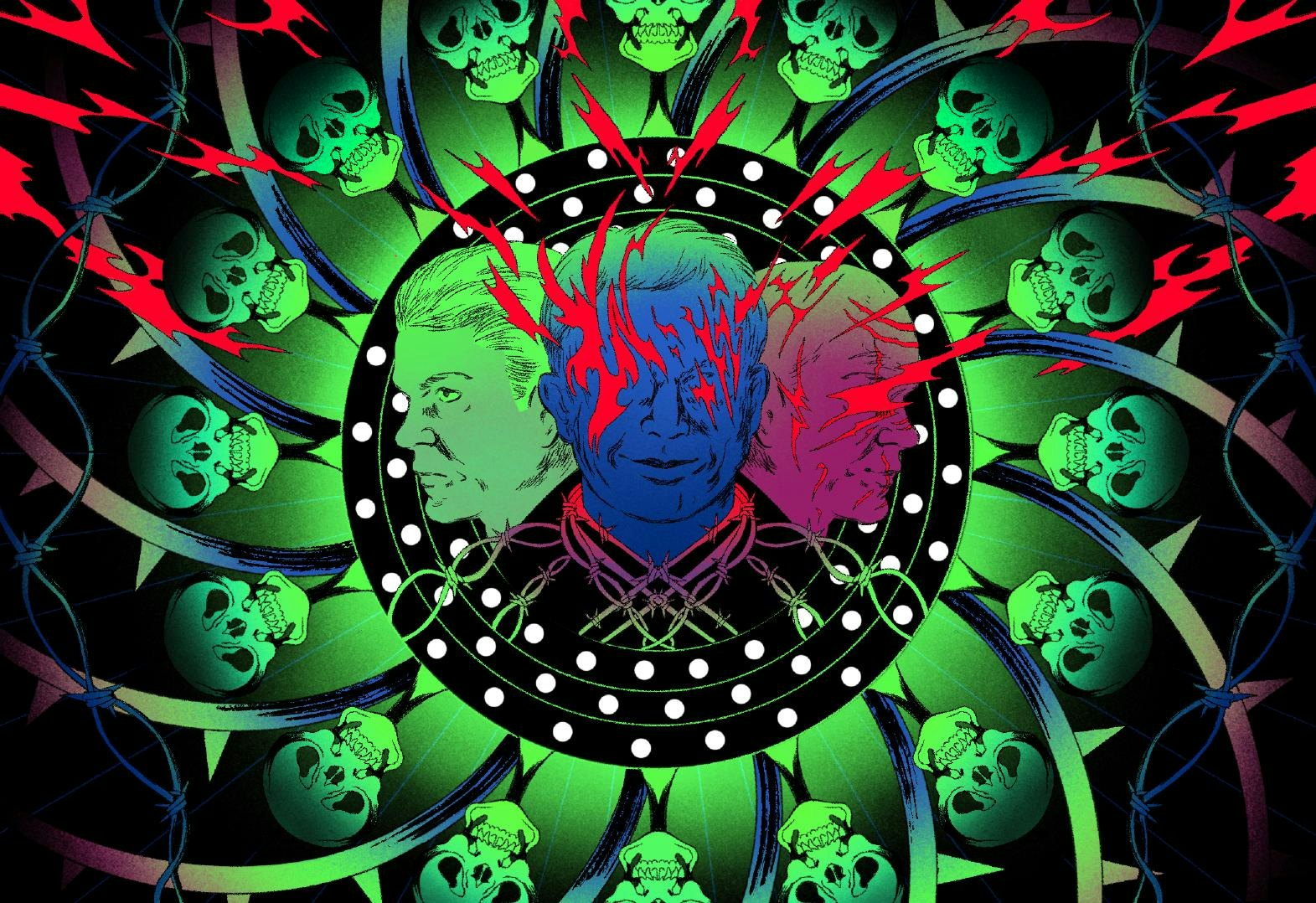
In the mid-’90s, Paul W.S. Anderson could have made almost any movie he wanted.
Coming off the success of Mortal Kombat, the English director found himself in an enviable position. “The way Hollywood tends to work is when you have a big hit, you’re a genius, and then, as soon as you have a failure, you’re an idiot,” Anderson recalled in a recent Entertainment Weekly interview. “I was in my genius phase.”
Hollywood offered him the X-Men. Instead, he chose Event Horizon, a science-fiction thriller from first-time screenwriter Philip Eisner best described as “The Shining in space.”
By all accounts, it was a disaster.
Event Horizon was rushed through production by Paramount Pictures to fill theaters after James Cameron’s Titanic hit delays. The film was also edited within an inch of its life when test audiences reacted poorly to gory visuals. “I don’t think Paramount knew what they had,” Eisner tells Inverse, adding that the studio marketed it like another Star Trek — not a violently graphic and claustrophobic film about a group of people going mad in space. The New York Times called it “a lemon of a movie.”
But time has been kind to Event Horizon. The movie stars Sam Neill, Laurence Fishburne, Kathleen Quinlan, and more as a space crew in the year 2047 sent to investigate a ship (also named the Event Horizon), which mysteriously disappeared seven years earlier only to emerge just as inexplicably. Soon after they arrive, the man who designed the Event Horizon, Dr. William Weir (Neill), goes completely insane and kills almost everyone as the ship’s hellish secret is revealed.
Shot at Pinewood on the sprawling stage reserved for James Bond movies, Event Horizon used real special effects for the majority of its sequences. (There was a good deal of real fire and smoke on set, though by all accounts it was an extremely safe production.) A quarter of a century later, Event Horizon is a cult classic with a story that resonates, iconic performances, and practical effects that still hold up to this day.
“It’s finally got the reaction now that I was hoping it would get 25 years ago,” Anderson tells Inverse. “Filmmaking is a long race that you run. It’s not all about the opening weekend.”
Speaking to the cast and crew, seven of the key members of the production, including Anderson and Eisner, reveal the story of how the film was born, died, and came back to life.
“A haunted house in space”
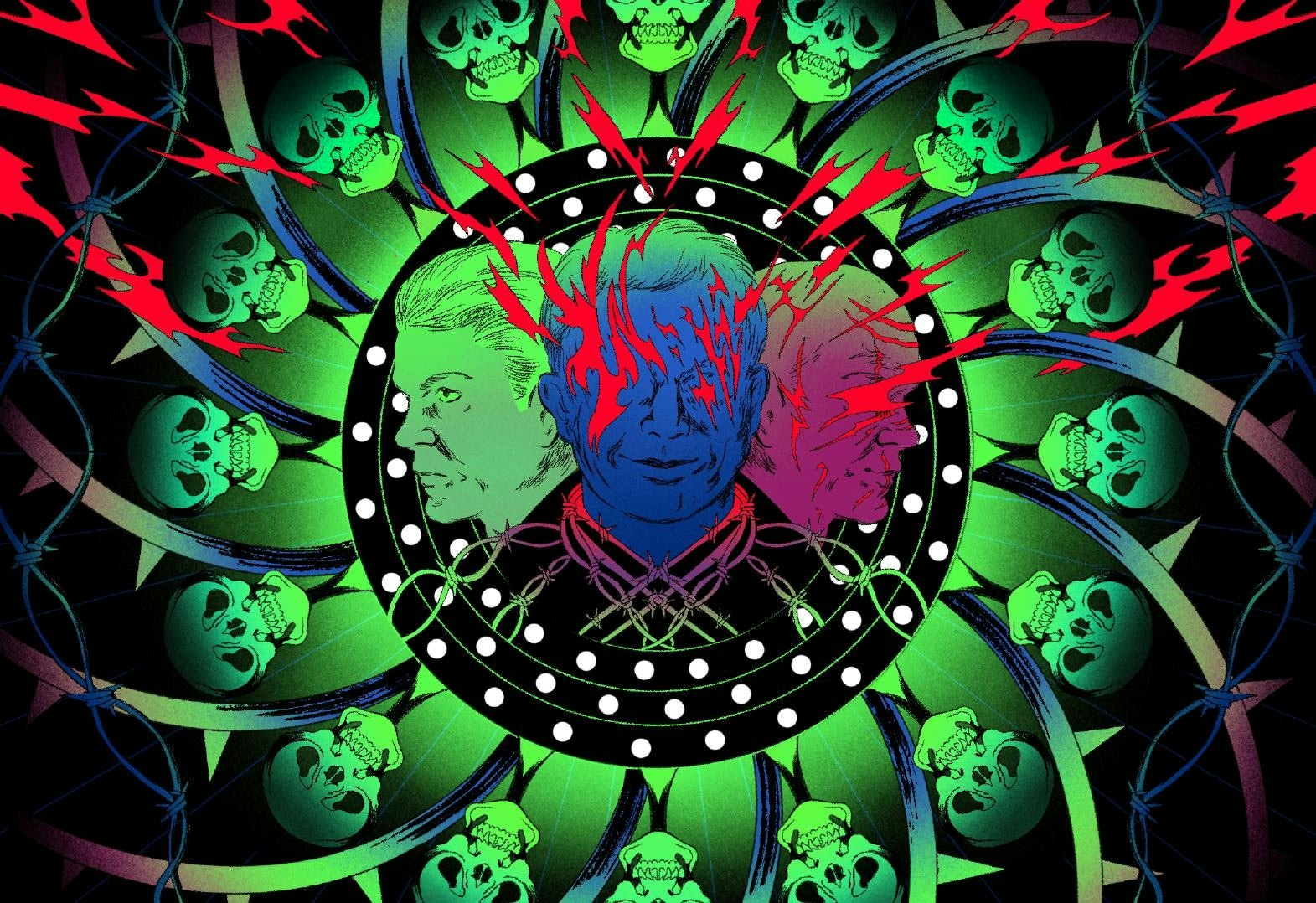
Philip Eisner (screenwriter): I love reading physics books. I used to smoke medical marijuana and my idea of falling asleep was, I’d smoke and then I’d read a physics book because being high gave me the illusion that I understood what I was reading. I wanted to do a haunted house in space. It struck me that warping space-time would have a terrible effect on the human psyche. We experience reality at a very particular scale and to be exposed to reality at a different scale would break you.
I had this idea, which was just The Shining in space. I wasn’t in a happy place. My father died in a skiing accident. When I wrote the description for the blood orgy, the studio commented on the image of the man and the woman having sex, and then she just reaches up and rips his throat out with her teeth. I was like, “I didn’t think that was disturbing at all. I thought that was Tuesday.”
Usually, you have two months to write the first draft. It took me eight.
“I was fighting tooth and nail.”
Jack Noseworthy (plays Justin): I read it and went in and auditioned a couple of times. There were some scenes where we were actually going over to the Event Horizon; a scene where Sean Pertwee says, “Cocked and locked and ready to rock.” Kathleen [Quinlan] and I had done a movie together before so we had a pre-existing relationship, which was always great.
Philip Eisner: We were maybe two weeks from shooting, and Paramount had sent people around to a mall in the Valley and asked them what a black hole was. The fact that no one in the San Fernando Valley knew what a black hole was terrified Paramount because they felt that if you didn’t know what a black hole was, the movie wouldn’t be scary. As a result, there was just a lot of pressure to turn it into the devil. “Let’s make it explicitly hell ship.” I was fighting tooth and nail.
“We did stuff for real.”

Paul W. S. Anderson (director): I had been in Paris and I walked into Notre Dame Cathedral, which is one of the finest examples of Gothic architecture in the world. I thought, “Let’s make it a Gothic haunted house. Let’s make it a cathedral in space, but instead of making it out of stone, let’s make it out of steel.” We scanned Notre Dame into a computer and then we constructed the Event Horizon using the constituent elements of Notre Dame.
Kathleen Quinlan (plays Peters): The sets were so incredible. They were so three-dimensional. Nothing was flimsy. It felt very real.
Neil Corbould (special effects supervisor): They wanted to do as much in-camera stuff as possible.
Paul W. S. Anderson (director): I had a very good visual effects supervisor on the movie — Richard Yuricich — and he’d worked on 2001, he’d worked on Blade Runner, he’d worked on all these movies that looked amazing even 15, 20 years on. And I said to Richard, “What is the secret of that?” And he said, “We did stuff for real.”
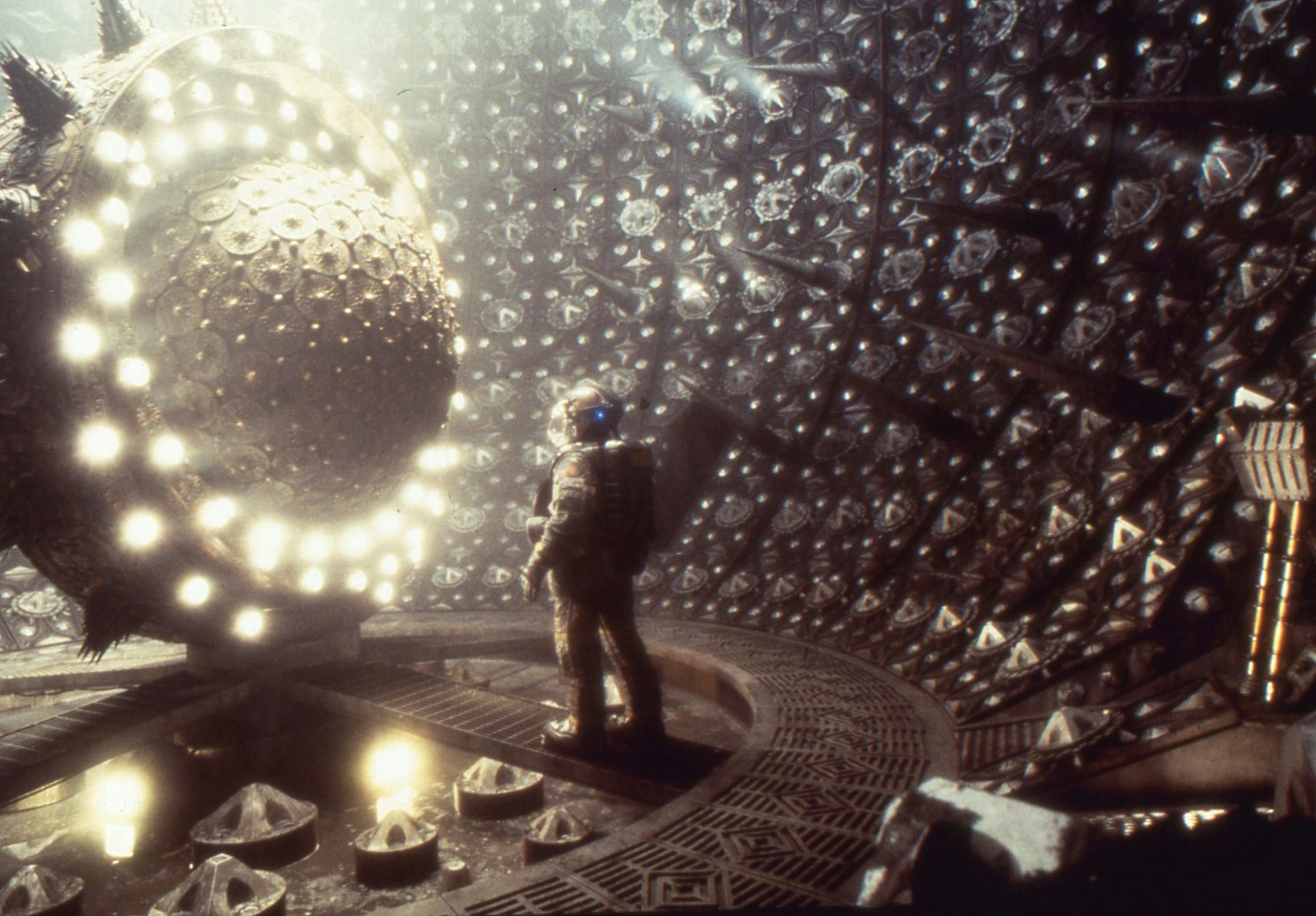
Neil Corbould: The spinning gyrosphere, we built that. The revolving tunnel, we did that for real. That was quite a tricky one to do because you’ve got a number of elements spinning around on different axes. You’ve got to focus on a point at the end of the tunnel — don’t look at the tunnel.
Simon Lamont (art director): That was really weird, actually, walking down there, because your exterior is circulating. When you walk down the walkway, you feel that, though you’re going upwards.
Philip Eisner: In the original script, there was a lot of zero-G. We wanted to keep it. Then we saw the budget and it’s like, “Magnetic boots. Everyone has magnetic boots!”
Paul W. S. Anderson: Whenever we could do practical flame or smoke or sparks, we would do them. That put the actors in some really intense situations — especially when the ship is leaking air and there are all these gusts of smoke. Those were actually fire extinguishers. The blasts look great, but they’re CO2 fire extinguishers, so it’s sucking the oxygen out of the air. The actors would really be gasping for their breath. It was perfectly safe but it kind of put them in an extreme position that I think really helped with their performances.

Neil Corbould: I remember we had to do a fireball down the revolving set. We had this rotating set that was outside — a replica of the one that was inside. We made up some propane canisters with a big release valve. We filled it up with liquid propane, and then you pressurize it with nitrogen, which is an inert gas so that you can’t get a blowback. To create the explosion, you need oxygen. And then we basically just release it. We have a pilot burner in front of it, and then we just shoot the liquid through a round nozzle through the tunnel. You probably wouldn’t be able to do it these days.
Simon Lamont (art director): They were getting all the smoke going up into the roof. I remember going to health and safety one day; I said, “We need masks.” And they said, “Masks won’t help. You need respirators.” I said, “Well, why aren’t you supplying respirators?” They said, “Well, it’s too expensive.” You wouldn’t get away with it now.
Kathleen Quinlan: I mean, God knows how much we’ve all sucked down of that smoke.
Simon Lamont: It was a tough shoot. But because of my background, it didn’t phase me.
“You wouldn’t get away with it now.”
Neil Corbould: The zero-G was quite a big deal for us. These days, the stunt people look after flying actors, but back then, it was special effects. A lot of wire testing. We did have to fit them all with flying harnesses. We had vertical sets that we filmed from the bottom. We built long tracks with a revolving ring on the back. As Laurence Fishburne was going down that very narrow tube, we were sort of spinning him around the rope, which was quite a tricky one.
Paul W. S. Anderson: There were no accidents. Neil Corbould and his team are exceptionally good.
“We’re all in it together.”

Paul W. S. Anderson: For all we were making a dark and terrifying movie, we had a lot of fun. Mind you, I wasn’t the one being hung upside-down and spun around.
Philip Eisner: Sam Neill may be one of the funniest people to work with. We’re getting notes of varying quality every 15 minutes. In the midst of this, one of the runners comes up and goes, “Sam wants to talk to you. There’s a problem with the script.” So I’m a little concerned. He’s like, “Oh. Philip. Yes. There’s a problem with the script. You see, my agent sent me this lovely binder, but it’s sized for American paper. And all these scripts are the wrong size paper, and the holes are in the wrong place. Can you get the script to fit into my binder?” And I was like, “No!”
Kathleen Quinlan: Sam Neill’s very quiet and kind of reserved unless you get to go to his wife’s birthday party, and then it became something quite different. He gave her this beautiful birthday party with Māori dancers. It was a night to remember. Jason Isaacs was very quick and witty, and so was Sean Pertwee.
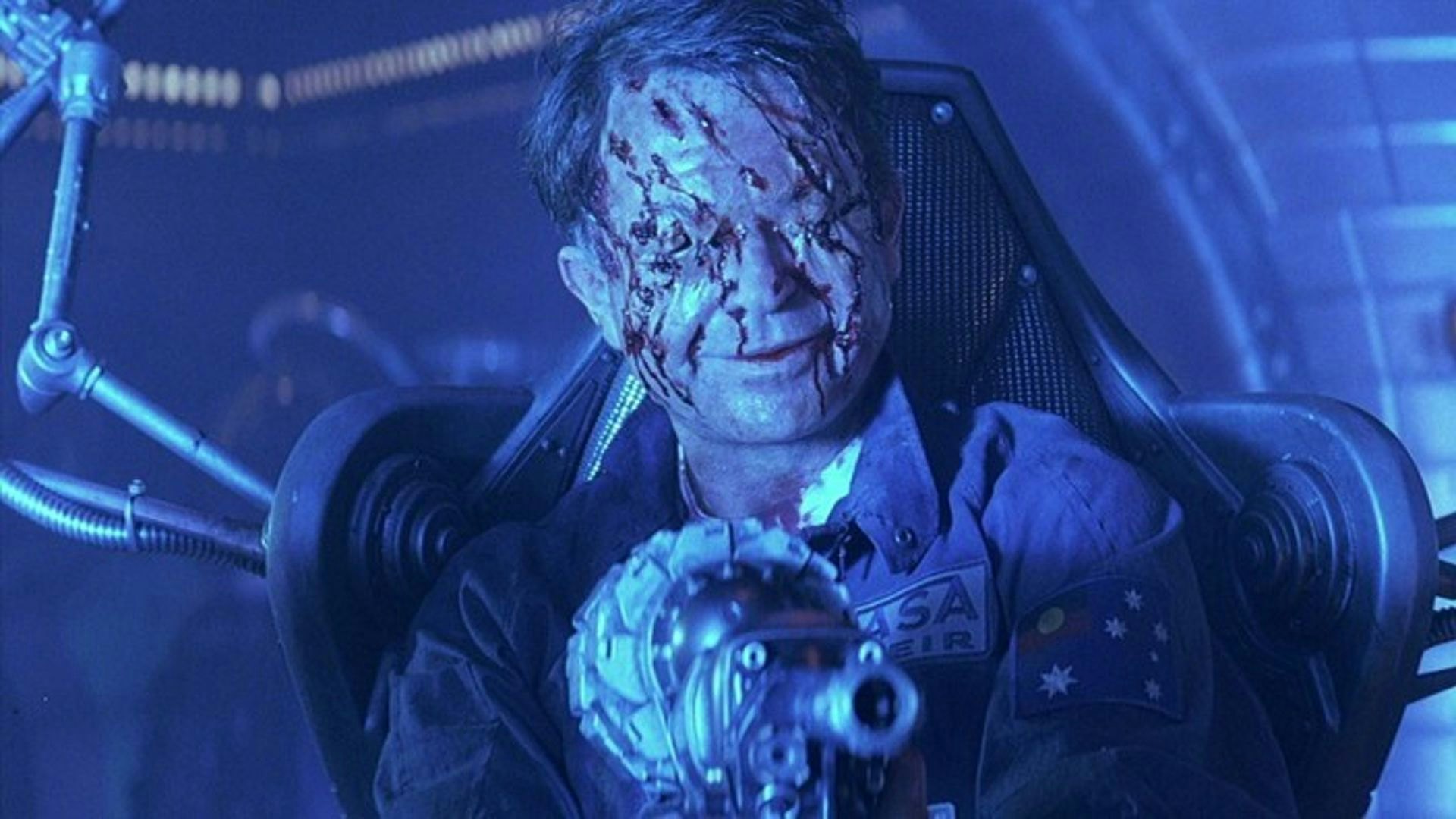
Paul W. S. Anderson: I noticed that Laurence would make very detailed notes on his script. Every scene, he’d have thoughts about. Apart from some scenes, he wouldn’t have anything other than “NAR.” And I asked him one time, “What does NAR mean?” And he said, “Oh, that means no acting required.” He very quickly learned that I was going to put him in a position where it’s going to feel real.
Philip Eisner: The suits are very heavy and very uncomfortable such that in between takes they have to have a grip holding the backpack so the actor doesn’t throw their back out. I’m walking through the room and I just hear this voice boom out, “EISNER!” I turn and it’s Laurence Fishburne. And he’s looking at me. And he goes, “YOU! YOU DID THIS TO ME.”
Jason Isaacs (plays D.J.): It was like doing a play. It’s one cast and you see each other most days. Like in the story, we’re all in it together.
Simon Lamont: The only one who was a little bit of a pain was Pertwee. He kept asking props for different items that weren’t scripted. He just wanted to take more of the screen time, I guess.
To hell and back

Paul W. S. Anderson: We started channeling the work of Hieronymus Bosch and the photography of Joel-Peter Witkin. On the one hand, it was graphic, horrific images, but I wanted it presented in a beautiful way. It repels you but it also attracts you.
The images had to be very specifically composed and very specifically lit. That’s why we shot it on the weekends. We brought Joely [Richardson] in last-minute on one Saturday. She came in, and we wrapped her in barbed wire and strapped her to a chair, and we were putting blood all over her. She just let slip that it was her birthday. They had big plans for her birthday and instead she was strapped to a chair and wrapped in barbed wire and drenched in blood.
Philip Eisner: The initial cut was incredibly violent.
Paul W. S. Anderson: It became very clear when we did the first test screening of the film that the people from Paramount had no idea this imagery was going to be in there and was going to be as powerful as it was.
Philip Eisner: There was a girl who had an apparatus on her face that pulled her lips back basically as far as they would go. It was really visually messed up.
Paul W. S. Anderson: At one point, one executive actually said to me, “But we’re the studio that makes Star Trek!”
Philip Eisner: Man, that theater was quiet.
Jason Isaacs: More of what happened on the Event Horizon in hell would not make the film better. It might make it worse. It’s precisely the fact that you barely alight on it that sets the imagination on fire.
Philip Eisner: I’m in there for a fraction of a second. They had me over a control, and I’m supposed to be eating the guts of someone’s stomach. But the angle I’m at, it looks like I’m giving him a beej. You don’t see the blood. What you’re seeing is me bobbing up and down. And it looks like whatever I’m doing, I’m enthusiastic.
Jason Isaacs: I had to have a body mold taken. I had my arms spread out and leaned on a big cross. It was in a slightly open warehouse with lots of worker bees with masks on and boiler suits. I kept my underpants on, and they went, “You can be naked if you like. Kate Winslet’s just been in and done her fanny.” And I went, “Well, good for Kate Winslet, she’s bolder than I am. I’m keeping my undies on.” It was just perfect — and incredibly strange – to see this facsimile of me. I asked to keep it, and they said, “No, it cost a fortune, mate.” I can’t remember the figure, but I think it might have cost more than I got paid for the cost of the film. And I said, “What are you going to do with it?” They said, “We’re going to keep it.” I went home and I was aggrieved about it. I told my then-girlfriend — now my wife — and she said, “What did you think we were gonna f*cking do with it? Stick it over the dining room table?”
A “mixed” reception
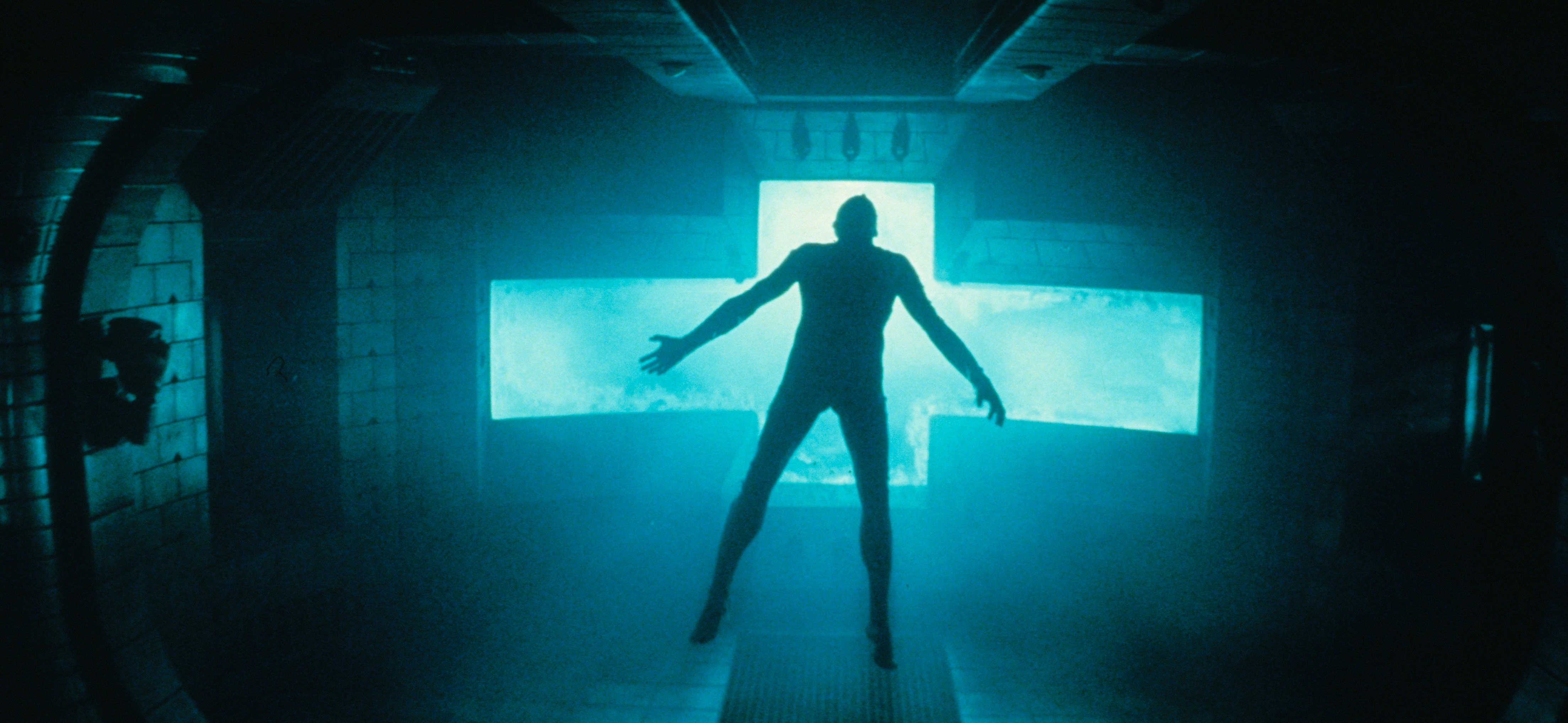
Paul W. S. Anderson: It was a rushed campaign because we were on very tight post-production.
Philip Eisner: Paul never got his director’s cut. It was never a question of “What’s the right length; what’s the right pace?” It was just “We have to hit the 90-minute mark.” They already had a release date. We were already in the schedule. It’s not uncommon. Armageddon shipped wet to the theaters. It was literally wet from being printed.
Paul W. S. Anderson: We ended up releasing the movie in the summer. It’s not really a summer movie. It’s a dark movie, and it should have been released in the fall, which was the original plan.
Jason Isaacs: [Producer] Larry Gordon hired a limo for us to do what he had traditionally done on many films, which was to drive around to different cinemas, stand at the back on the night of its opening, and just watch the reception. After we went to the first cinema, he went out to speak to the box office, came back to the car, and went, “Let’s just go for dinner, shall we?”
Kathleen Quinlan: I felt disappointed for them. I happened to be over at a friend’s house and James Cameron was there. And I said, “Why do you think it didn’t work, Jim?” And he said, “Because people want a manifestation. They want a manifestation of a creature or whatever.” And I said to him, “But I think it’s so much more interesting when it’s the film tapping into all our subconscious fears and we’re manifesting it.” And he goes, “Yeah, but it’s film.”
Jack Noseworthy: I went to the premiere with my family. I brought my niece and nephew. They were a little too young to be seeing the movie, but my sister was like, “No, no, no, they can see it, they’re fine.” I’m not sure she thought that after she saw the film.
Paul W. S. Anderson: The critical reception was very mixed. There were some people that just absolutely hated it. I remember one outlet said, “Rather than spending $5 on Event Horizon, just have a loved one put a metal bucket on your head and hit it with a wrench for an hour and a half because it’ll be exactly the same experience.”
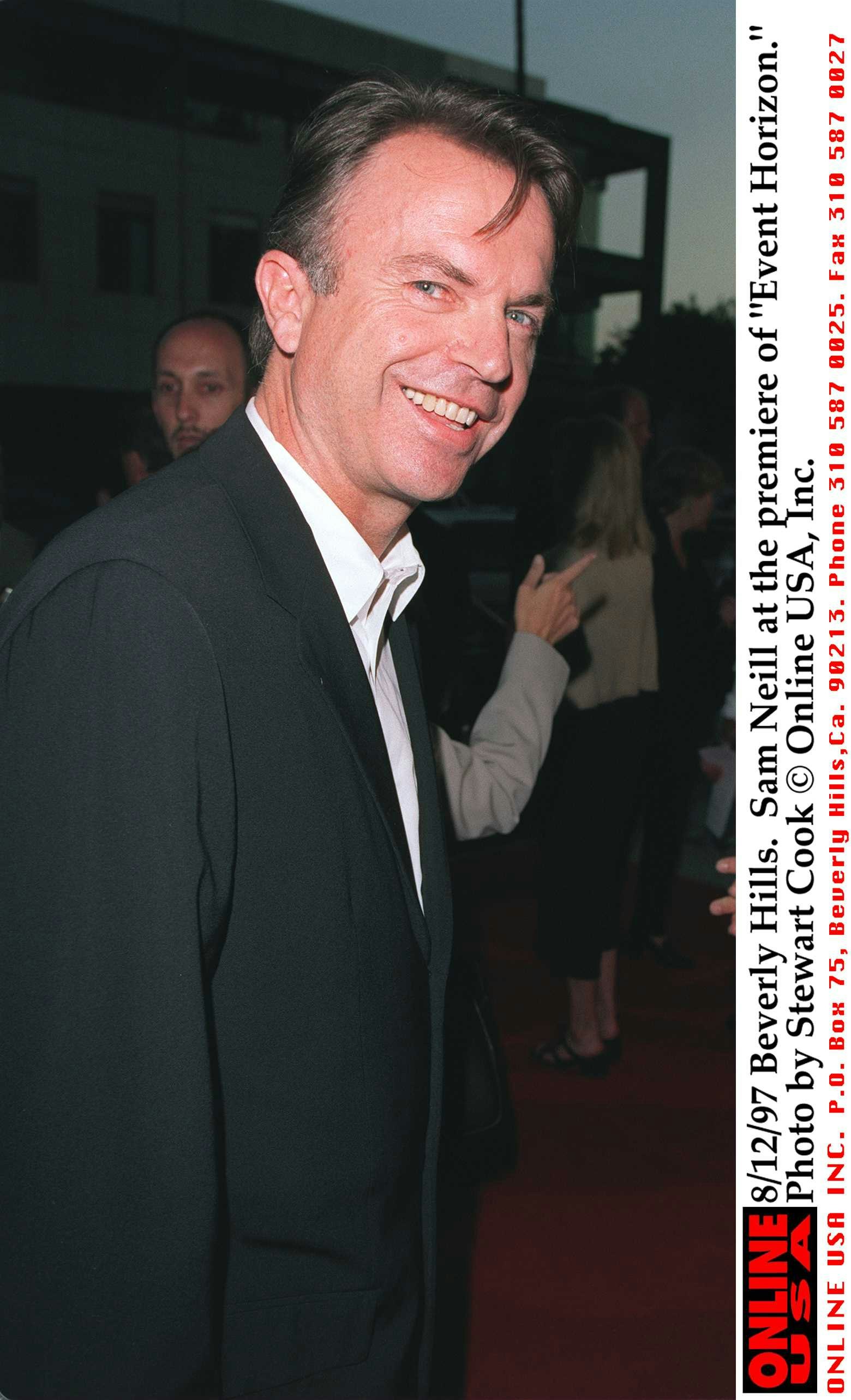


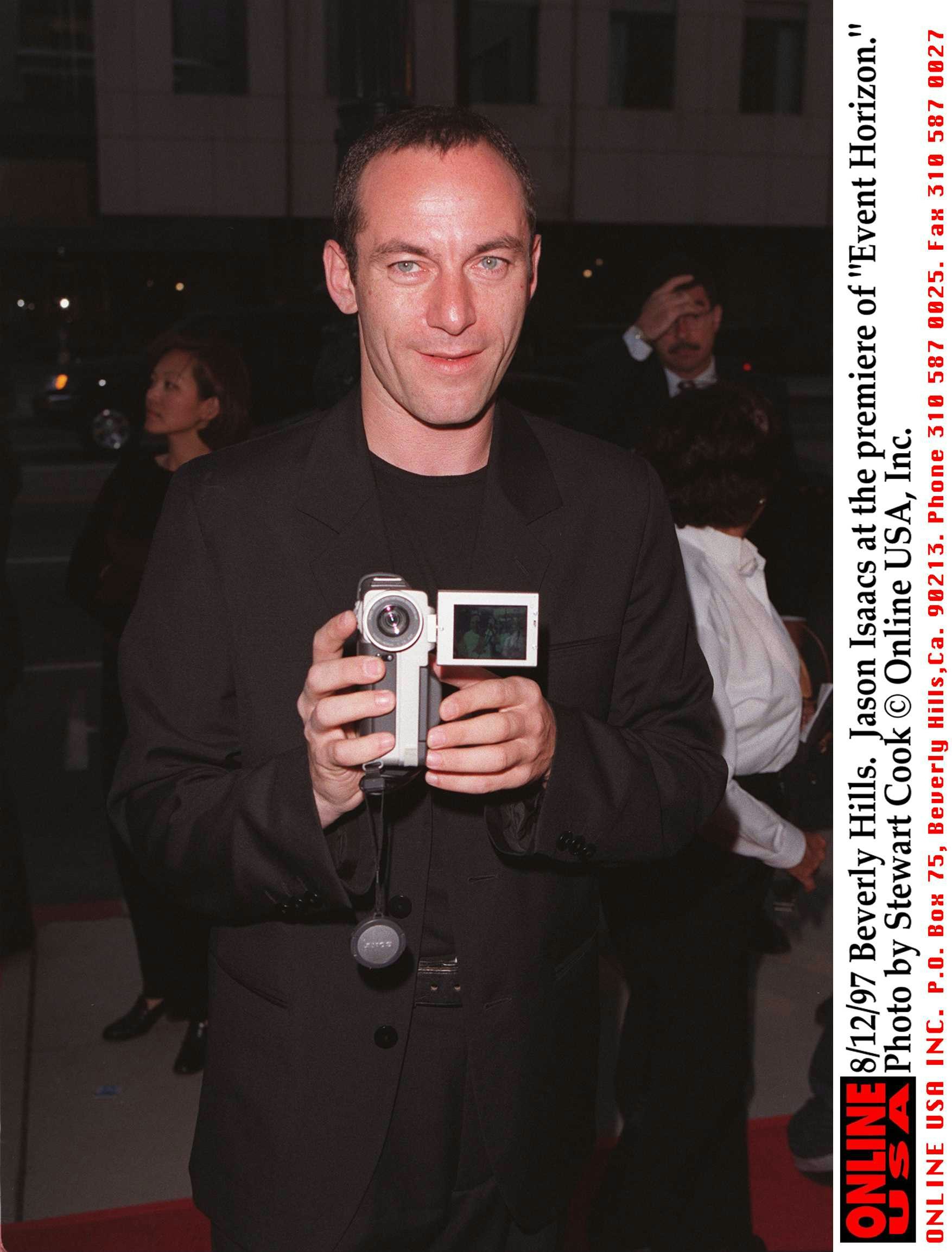
Philip Eisner: This was the early days of the Internet. There was someone who actually called out the dialogue and said, “If I ever meet Philip the writer, I’m going to slap him in the face.” So I said, “Oh, I’m right here. Here’s my address. I will discuss this in the street with you whenever you like.” They did not respond. But I still feel that way. You want to get physical about a movie? Sure. I’m from Texas. I’m used to that sort of nonsense.
Jason Isaacs: Maybe because it wasn’t successful but has become successful over the years, there’s a funny bond between all of us that still hasn’t quite broken. We hadn’t gone to space and we hadn’t been to hell, but we were in this together.
“I may have read some of the material generated, and it’s amazing.”
Jack Noseworthy: I think Amazon is going to turn it into a television series, so I’m expecting to be called back to play Justin and lead this television series.
Philip Eisner: All I can say is that some incredibly talented people are working very very hard. I’m not one of those talented people. I’m cheering from my sidelines, which I love the idea of. I may have read some of the material generated, and it’s amazing.
Paul W. S. Anderson: I was going on to make a movie with Kurt Russell, and I screened the movie for Kurt. Afterward, he said, “Paul, I’m telling you now, in 20 years, that’s going to be the movie you’re really glad you made.” And he was right. It’s finally got the reaction now that I was hoping it would get 25 years ago. Even if it doesn’t get the reception you initially want, it’ll find its audience and it’ll find its place and it’ll be appreciated. It just might take a little time.







